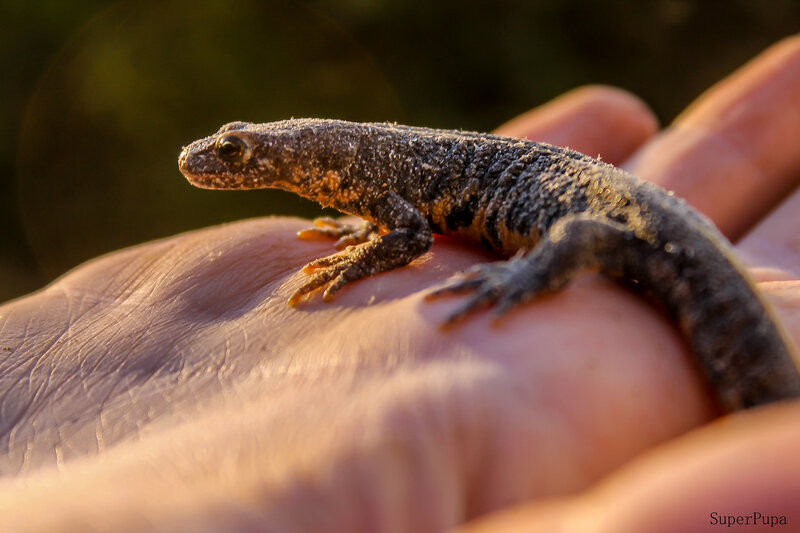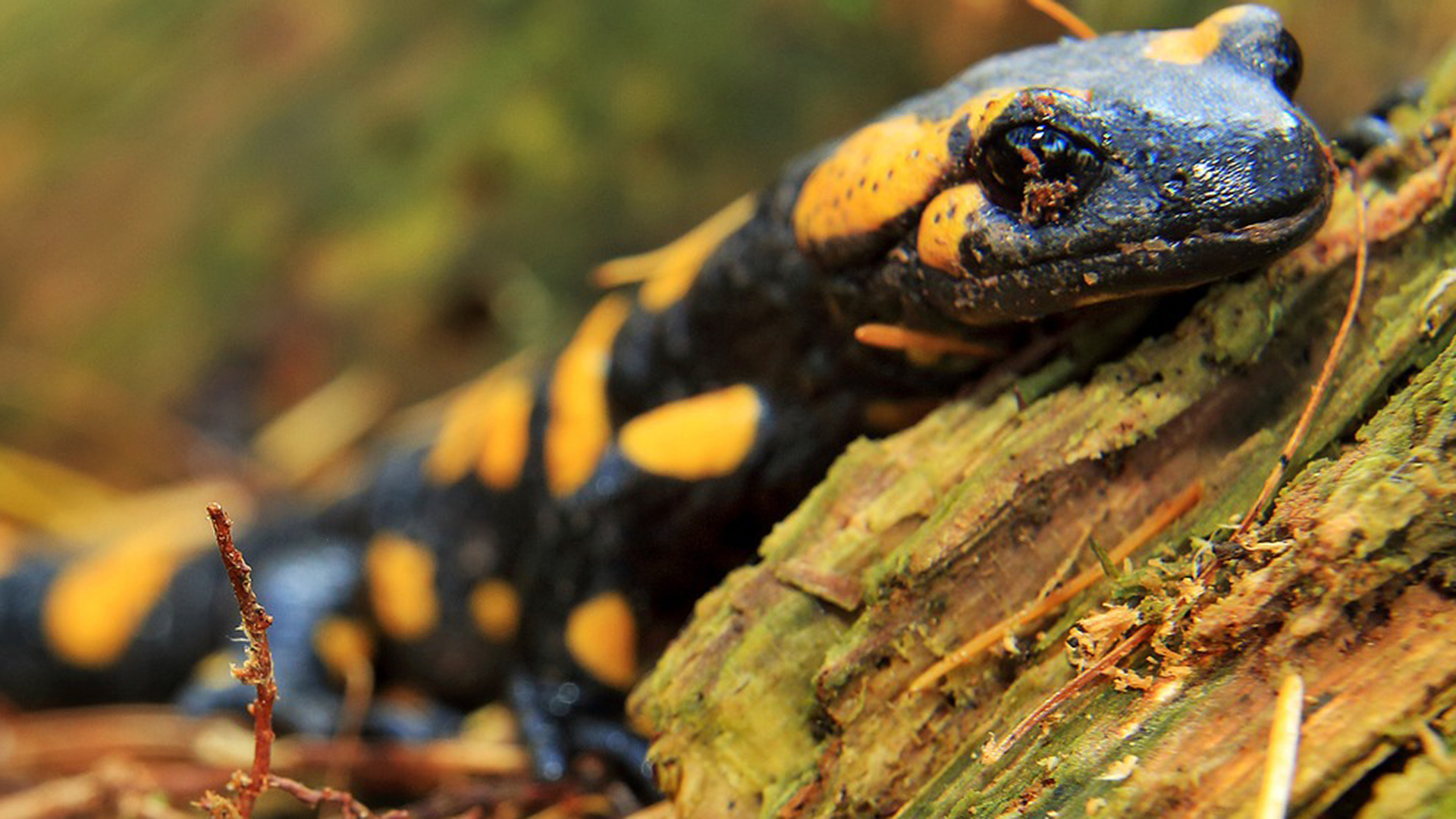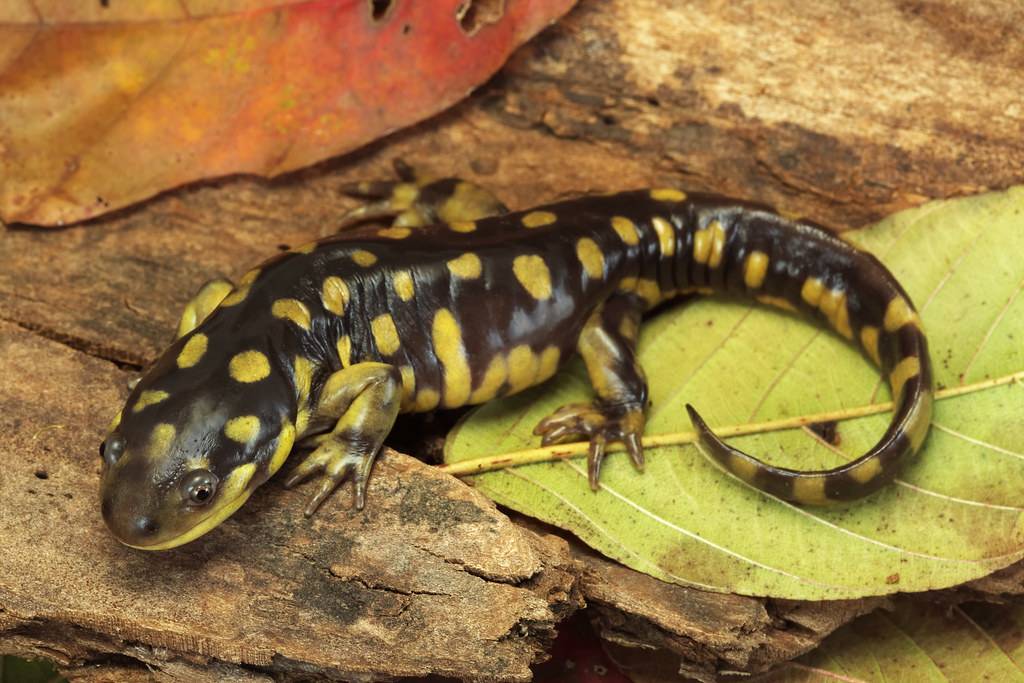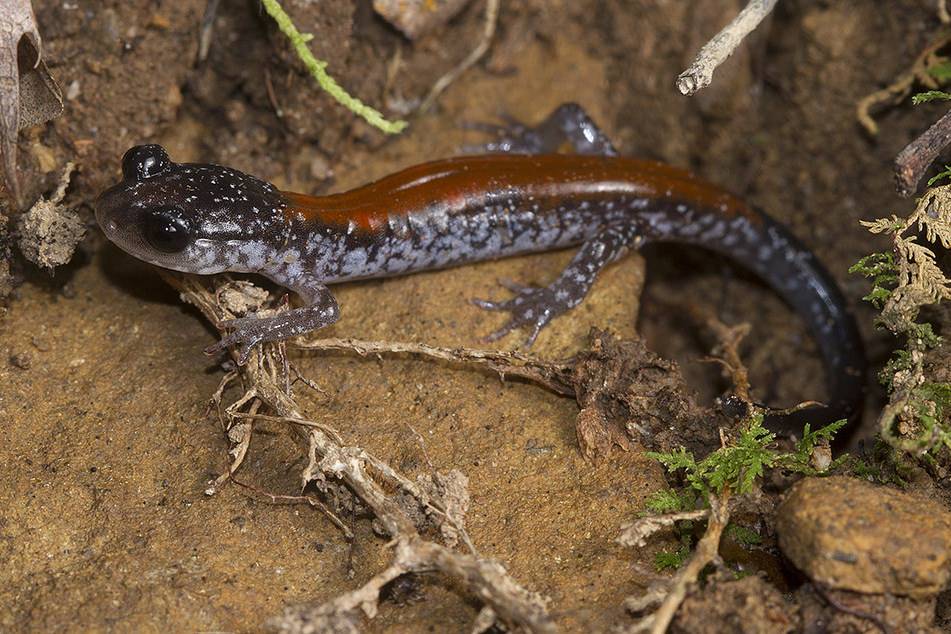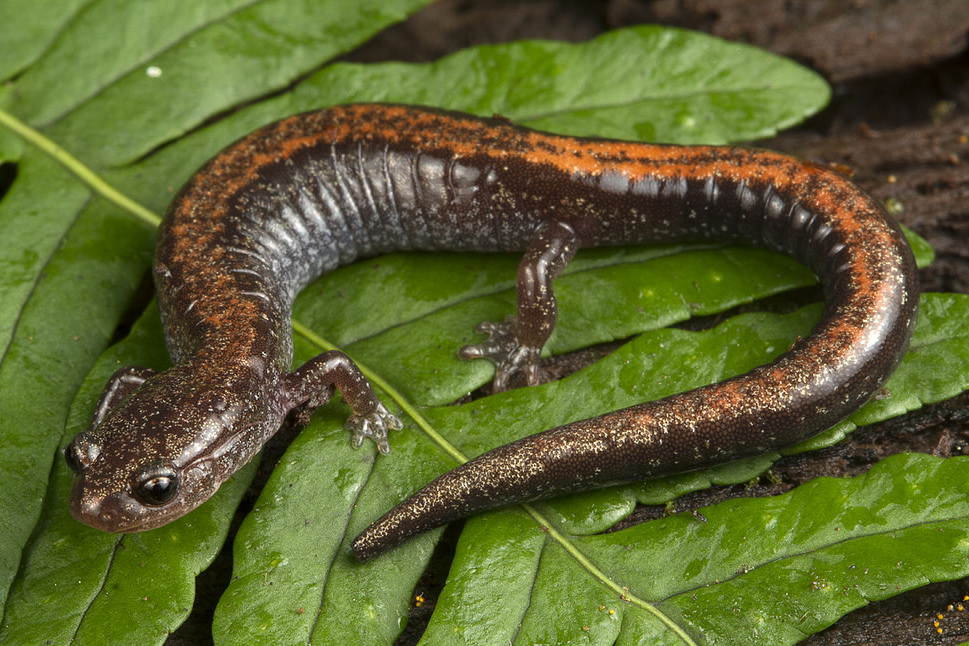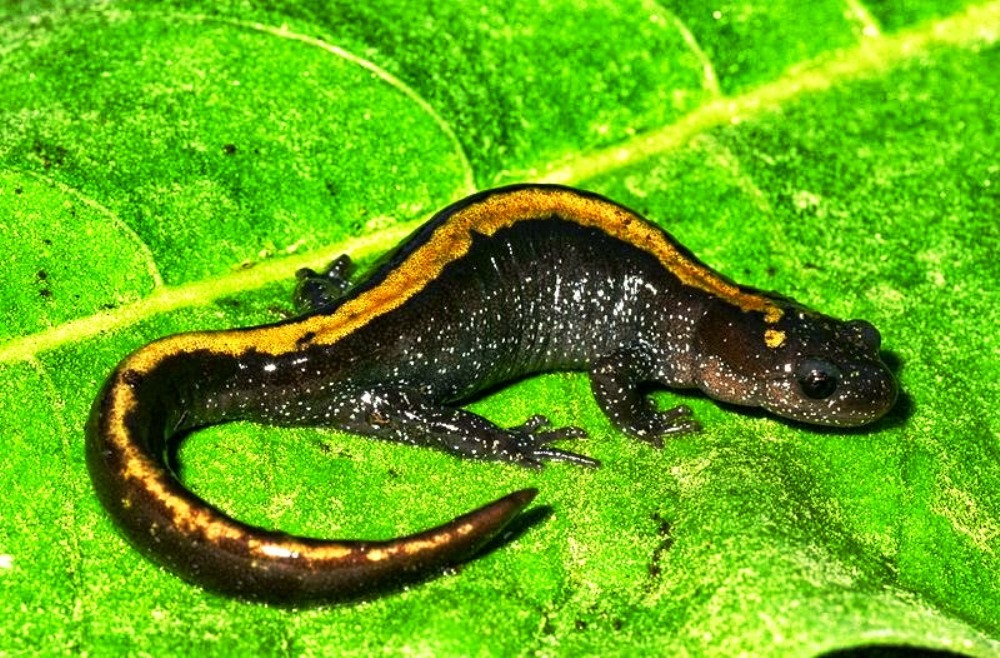Taxonomy and subspecies
S. a. aurorae (Golden alpine salamander)
S. a. prenjensis in Montegnegro
- S. a. atra is a fully melanistic (black) subspecies from central, eastern and Dinaric Alps. This subspecies is the most widespread.
- S. a. aurorae, the golden alpine salamander, has golden or yellow spots on its back and primarily lives in a small area in the Venetian Prealps near Asiago, and in the Italian Alps.
- S. a. pasubiensis, with fewer yellow spots than S. a. aurorae, lives in a different part of the Venetian Prealps.
- S. a. prenjensis lives on Prenj Mountain, part of the Dinaric Alps in Bosnia and Herzegovina. The validity of this subspecies is yet to be confirmed, and some scientists in the field debate if this salamander should be considered its own independent species.
Genetic analysis suggests that the Corsican fire salamander (Salamandra corsica) is the closest related species, and the black-yellow coloration is an ancestral feature of alpine salamanders. Proposed colonization from south (Prealps) to Alps was carried out by the fully melanistic (derived feature) S. a. atra after the last retreat of the ice sheets.
#14. Holbrook’s Southern Dusky Salamander

Identifying Characteristics
Adults range from 3 to 6 inches in length.
Their coloring is brown to black with 1 or 2 rows of white spots on the sides, a light stripe extending from the eye toward the base of the jaw, and a gray-brown to black underside with small white speckles.
The hind legs are noticeably larger than the front limbs, and the tail is long and slightly flattened.
These salamanders are typically found in muddy areas close to ponds, swamps, floodplains, and slow-moving or stagnant streams. They’re nocturnal and spend most of their time under logs, rocks, leaf litter, and other debris.
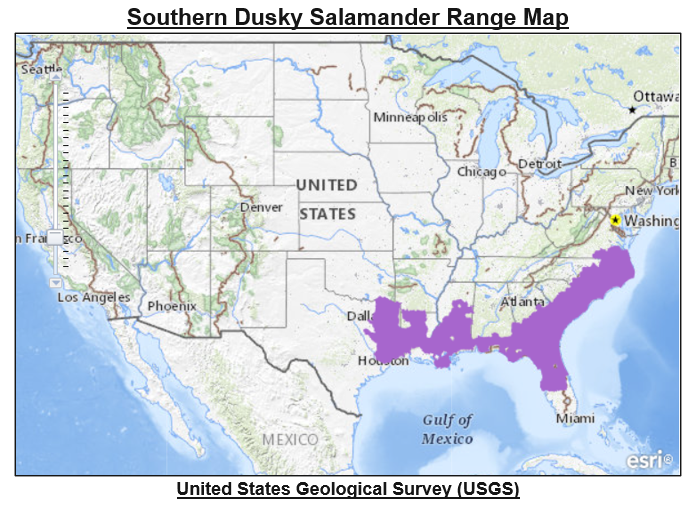
Unlike other terrestrial salamanders, Holbrook’s Southern Dusky Salamanders rarely stray far from the water. They feed primarily on aquatic invertebrates. So, if you want to find one, your best chance is to explore creeks, swamps, or other calm, shallow water.
Some populations of Holbrook’s Southern Dusky Salamanders have seen unexplained declines across their range since the 1960s. In addition, they’ve disappeared from portions of their range altogether, such as the Florida peninsula.
#15. Long-tailed Salamander

Identifying Characteristics
Adults range from 4 to 8 inches in length.
Their coloring is yellow to brownish-red with many black spots, which may form broken lines and are often more distinct on the tail, and a light yellow or cream underside.
They have a noticeably long tail, large eyes, and a slender body.
Long-tailed Salamanders prefer wet, covered habitats like the sides of streams, ponds, springs, cave mouths, limestone seeps, and abandoned mines.
Look for these salamanders during the first few hours after sunset on humid or rainy evenings. They’re nocturnal and spend most of the day under rocks, logs, leaf litter, and other debris.
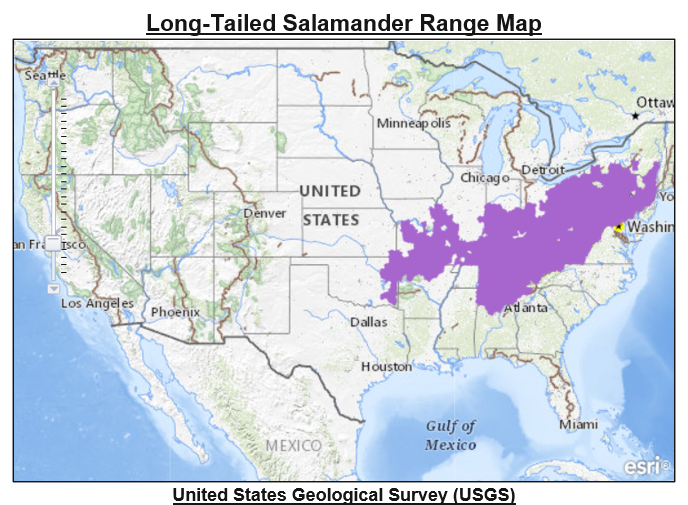
When threatened, this species of salamander will quickly escape into cover. If a predator grabs its tail, it will easily break off, allowing them to escape.
Unlike other salamanders in Georgia, Long-tailed Salamanders don’t display territorial behavior. Groups of 80 individuals have been found under single rocks, and one study found 300 individuals at the end of a mine shaft!
Размножение
Огненные саламандры, одни из немногих видов саламандр, которые являются яйцеживородящими. Их яйца вылупляются в теле матери и личинки появляются живыми.
От географического района их проживания, зависит период их спаривания, обычно он начинается с весны и продолжается до осени.
Ухаживание происходит на суше. Самец подобрав самку, преграждает ей дорогу и массирует подбородок, после чего залезает под нее, захватывает ее передние конечности. После чего кладет сперматофор на землю и опускает на него клоаку самку.
Это ухаживание происходит только на суше. Когда мужчина определяет доступную женщину, он преграждает ей путь и массирует ей подбородок. Затем он залезает под нее и хватает ее за передние конечности.
В этот момент самец кладет сперматофор на землю и пытается опустить на него клоаку самки. В случае успеха самка аспирирует сперматофор и внутренне оплодотворяет собственные яйцеклетки.
После оплодотворения наступает период беременности, который длится от 2 до 5 месяцев и обычно происходит во время спячки.
После вылупления яиц, самка заходит в водоем и рожает личинок. В среднем у нее рождается от 20 до 75 развитых личинок. Роды длятся от нескольких часов до нескольких дней.
Личинки живут в воде в течение 3-5 месяцев, после чего они становятся наземными животными.
На коже личинок отсутствуют специфичные ядовитые железы, поэтому они уязвимы для хищников.
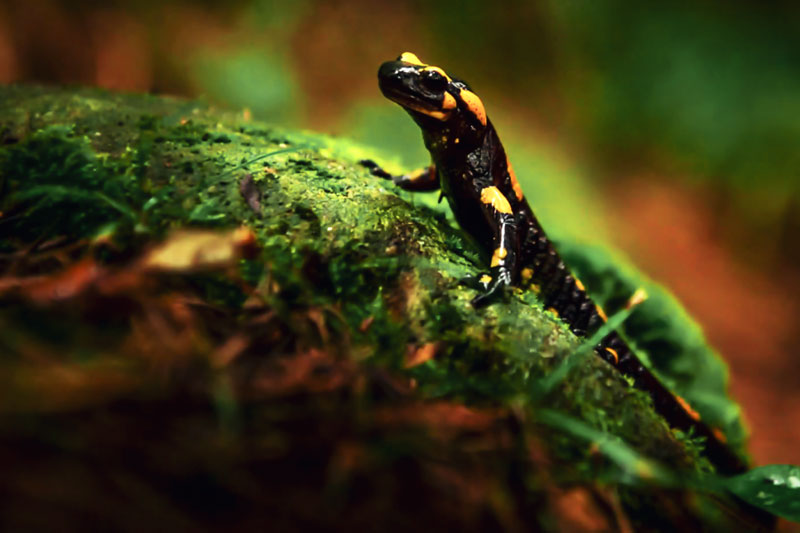
Климова Оксана
Привет, я автор этого блога, занимаюсь им в качестве хобби. Немного о себе, я зоолог, работаю в Национальном парке Крюгера в Южной Африке уже более пяти лет. Занимаюсь изучением и наблюдением за ядовитыми змеями и прочими удивительными и опасными существами.
Comparing genes
RELATED: WONDERFUL AMPHIBIANS AND REPTILES
1 of 23
An ensatina salamander (Ensatina eschscholtzii eschscholtzii).
Photograph by Joel Sartore, National Geographic Photo Ark
To conduct the study, the researchers examined museum specimens of giant salamanders collected many decades ago, before the widespread farming and movement of amphibians around the country (by humans).
Their analysis shows that salamanders began to diverge 3.1 million years ago, as the Tibetan Plateau rose, along with the Nanling Mountains, in south-central China. This geographically separated the animals into at least three lineages, all of which are separate species, unique to the Yangtze River in the north, the Pearl River in the southwest, and various streams in the southeast.
These results follow from the unique geography and genetics of the groups, but the scientists don’t know what exact anatomical differences the separate species might have, due to the different ways in which the animals were preserved. Some of the specimens are preserved in liquid, and others dry, which over the years in some cases have formed dried-out bits of “amphibian paper,” Turvey says.
Many of the samples are also young salamanders, lacking some characteristics seen in older individuals. Poaching pressure has made it such that the animals don’t grow to enormous lengths in the wild anymore, he adds. It’s impossible to say at this point how full-grown adult salamanders of each species would differ from one another.
For the third species, the group hasn’t yet been able to describe it or name it, because they only have only DNA from tissue samples to work with, and not a complete animal specimen, Turvey says. (See also: New species of giant salamander discovered in Florida.)
The researchers hope the work will lead to more appropriate conservation actions going forward. Ideally, salamanders from farms could be screened and have their genetics identified, before potentially being bred and reintroduced to the wild.
“We’re in drastic danger of losing the world’s largest amphibians,” Turvey says.
#13. Mole Salamander
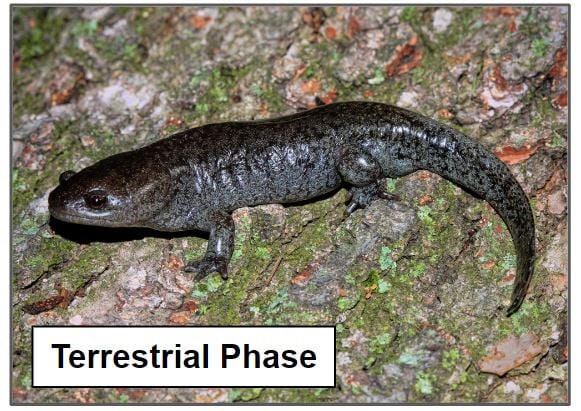
Identifying Characteristics
Adults typically range from 3 to 4 inches in length.
Their coloring is black, brown, or gray with pale bluish or silvery flecks.
They have large, flattened heads, stout bodies, and two light stripes on their underside.
The aquatic morph has external gills.
Unlike other salamanders in Georgia, some Mole Salamanders live on land, while others live in water.
Mole Salamander juveniles will either metamorphose into a terrestrial form or grow and remain aquatic. Interestingly, both the aquatic and terrestrial morphs are capable of breeding, and they may even interbreed.
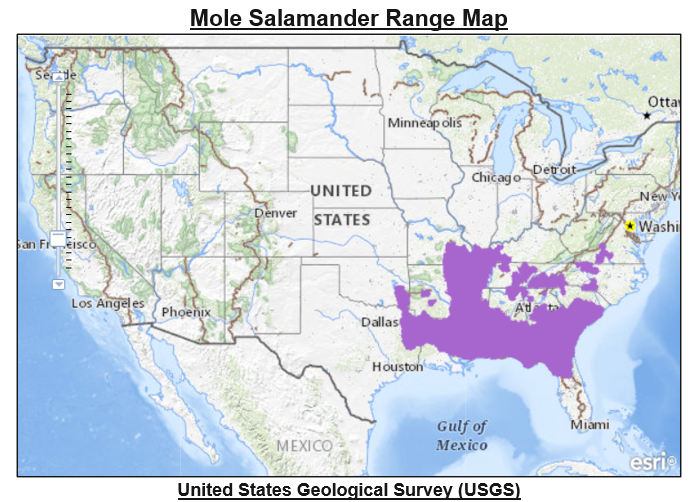
Scientists don’t fully understand why some Mole Salamanders undergo metamorphosis and others don’t. They may be affected by environmental conditions, including prey availability, water level, and predation. One study indicated that aquatic morphs breed earlier and have higher survival rates than terrestrial morphs.
Aquatic Phase of the Mole Salamander
 Ambystoma talpoideum. (2023, October 26). In Wikipedia.
Ambystoma talpoideum. (2023, October 26). In Wikipedia.
Although they die at a higher rate as juveniles, terrestrial morphs seem to have longer lifespans. Mole Salamanders may live for up to 20 years in the wild.
#18. Mud Salamander

Identifying Characteristics
Adults range from 3 to 8 inches.
Their coloring is red or reddish-brown with black spots, and their color darkens with age.
They have a stocky body, short snout, short tail, and brown eyes.
Mud Salamanders prefer soft, muddy areas for burrowing. They can sometimes be found in old crayfish burrows. They spend most of their time near burrow entrances and retreat into them when threatened. Their back also gives off toxic secretions to help fend off predators.
Due to their burrowing habits, Mud Salamanders are difficult to spot. Little is known about their feeding habits, but they’re believed to consume insects, earthworms, and arthropods. They may also prey on other salamanders.
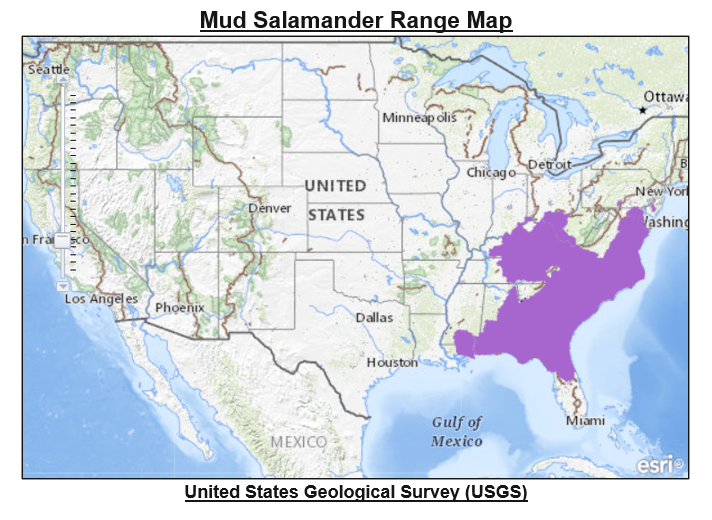
Little is known about Mud Salamander populations, and sightings are rare. They are believed to be stable but are susceptible to water quality degradation and habitat loss. They are currently listed as a species of least concern on the IUCN Red List of Threatened Species.
#20. Greater Siren
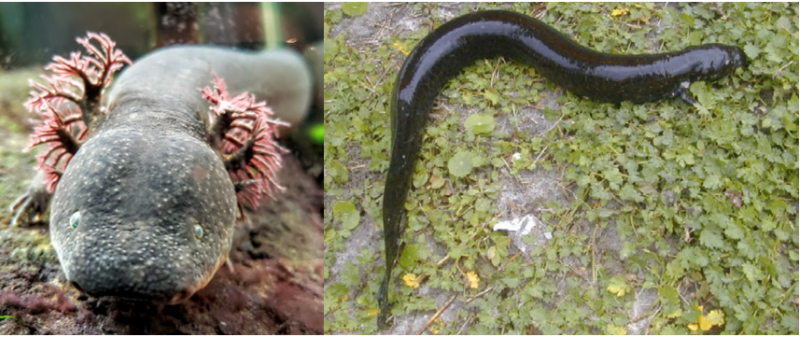
Identifying Characteristics
Adults range from 7 to 38 inches in length.
Coloring varies with range, but it is typically olive or gray with yellow or green dots on the sides, and younger sirens may have a light stripe down their sides which fades with age.
They lack hind limbs and eyelids and have external gills and reduced fore-limbs.
Unlike many salamanders in Georgia, Greater Sirens lack a terrestrial stage and spend their entire lives in aquatic environments. They can be found in heavily vegetated swamps, ponds, ditches, streams, and lakes near coastal areas.
Adults spend most of their time among plant material, sunken logs, or other debris. They can live in seasonal wetlands and bury themselves in the mud to go dormant when temporary ponds dry up. One lab specimen was reported to have been dormant for over five years!
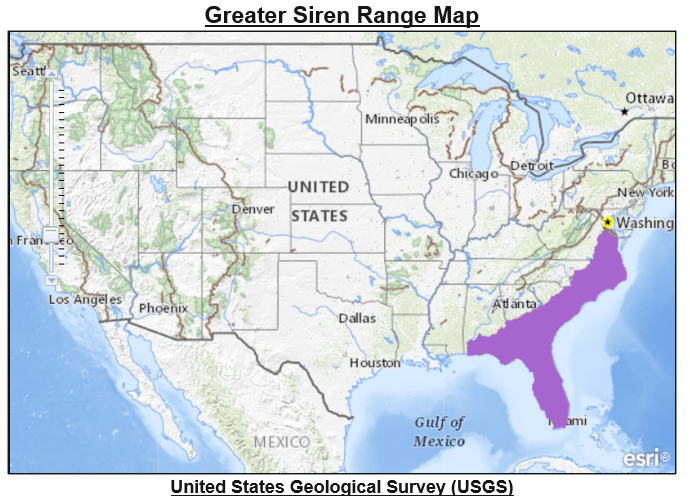
As Greater Sirens often occupy habitats with low visibility, they don’t rely on sight to locate prey. Instead, they have a Jacobson’s organ (a chemical receptor organ also found in snakes), which allows them to smell prey, and a lateral line organ that allows them to sense vibrations in the water. They may also be able to sense disturbances in electrical fields.
When threatened, Greater Sirens may quickly flee using their powerful tails or give off a series of warning sounds. They make yelps, hissing sounds, and croaks similar to the sounds of young ducks. Greater Sirens can also deliver a painful bite.
Which of these salamanders have you seen in Georgia?
Tell us about it in the comments!
Also, if you enjoy this article, make sure to check out these other guides about herps! As you may have guessed, “herps” refers to herpetology, the study of reptiles and amphibians like salamanders.
Размножение саламандр
Рекомендуем по теме
Вараны Черепаха Хамелеон
Саламандры, относящиеся к числу скрытожаберных, характеризуются способностью откладывать яйца. В то же время настоящие саламандры способны быть как яйцеживородящими, так и живородящими. Размножение у земноводных может происходить на протяжении всего года, особенно в условиях теплого климата. Однако обычно пик активности приходится на весну.
Наступление готовности самца к спариванию характеризуются набуханием специальной железы, которая начинает наполняться мужскими половыми клетками. В этот момент самец ощущает возбуждение и устремляет все свои силы на поиск самки, чтобы заняться продолжение рода
За внимание «дамы» обычно соперничают несколько самцов. Чтобы решить, кому достанется самка, саламандры могут устраивать бои, победитель которых занимается оплодотворением самок
Свое семя самцы выделяют непосредственно на землю, откуда самки вбирают его с помощью клоаки
Такой процесс оплодотворения характерен для саламандр, живущих на земле
Свое семя самцы выделяют непосредственно на землю, откуда самки вбирают его с помощью клоаки. Такой процесс оплодотворения характерен для саламандр, живущих на земле.
Для живородящих саламандр характерен период беременности длительность которого составляет порядка 10 месяцев. Все это время потомство развивается внутри материнской утробы.
 Для водных саламандр аналогичный процесс отличается тем, что новорожденные появляются из оплодотворенных яиц уже через два месяца, имея при этом целиком сформированные жабры. Внешне такое потомство похоже на головастиков.
Для водных саламандр аналогичный процесс отличается тем, что новорожденные появляются из оплодотворенных яиц уже через два месяца, имея при этом целиком сформированные жабры. Внешне такое потомство похоже на головастиков.
Маленькие саламандры в водной среде растут в течение еще трех месяцев, постепенно все больше трансформируясь и становясь похоже на своих родителей. Завершается подобное взросление моментом, когда маленькие саламандры начинают ползать по дну, а после выныривать и пробовать дышать воздухом. Родители не имеют никакой связи с потомством, поэтому после окончательного взросления саламандры начинают вести свою самостоятельную жизнь.
Опрос: Видели ли вы когда-нибудь саламандру в живую? Да, в дикой природе 0%
Да, в условиях террариума зоопарка 33.33%
Да, в домашних условиях 33.33%
Нет, никогда не видел(а) 33.33%
Проголосовало: 3
Альпийские саламандры принадлежат к числу живородящих, вынашивающих свое потомство на протяжении года. Несмотря на наличие в яйцеводах нескольких десятков яиц на свет живыми появляются только несколько новорожденных. Для них прочие яйца становятся источником пищи, помогающим им набрать силы.
У огненных саламандр процесс размножения не полностью изучен ввиду того, что их цикл размножения подвержен регулярным изменениям. Это обусловлено их особенностями обитания на различных территориях. Обычно период брачной активности огненных саламандр приходится на раннюю весну. Несколько подвидов огненных саламандр относятся к числу живородящих, однако большая часть размножается посредством откладывания яиц.
#16. Spring Salamander

Identifying Characteristics
Adults range from 5 to 7.5 inches in length.
Their coloring is highly variable: salmon, brownish-orange, yellowish-brown, or red, often with darker spots or a mottled appearance.
They have a slender build and a light-colored ridge bordered by brown or black runs from the eye to the tip of the snout.
Spring salamanders are semi-aquatic and can typically be found near springs, mountain streams, or caves. During the day, they spend their time beneath logs, rocks, or leaf litter on the edges of these water sources.
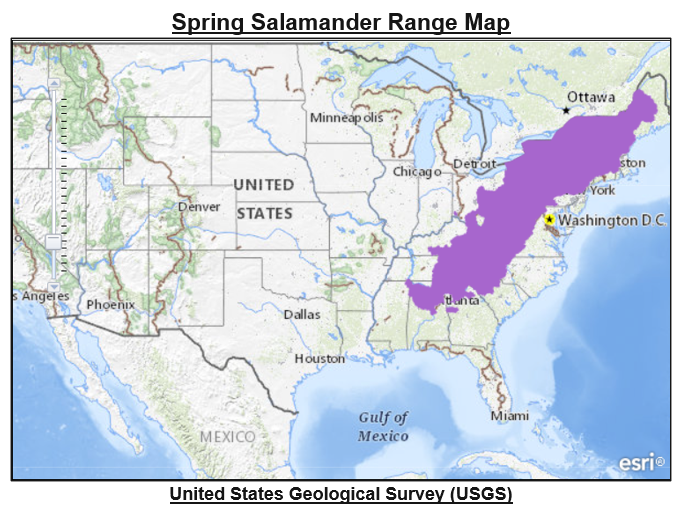
They eat various invertebrates like insects, spiders, millipedes, earthworms, and spiders. However, Spring Salamanders won’t hesitate to eat other salamanders, including their own species. Scientists have found that in some populations, the bulk of the Spring Salamander’s diet is made up of other salamanders!
#8. Southern Two-Lined Salamander
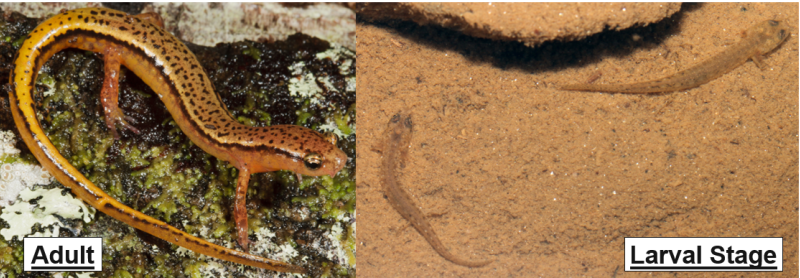
Identifying Characteristics
Adults range from 2.5 to 3.75 inches in length.
Their coloring is tan to light yellow, with two black stripes running from the eyes down the tail.
They have a thin body and black flecks on the back.
Southern Two-Lined Salamanders occupy temperate forests in Georgia. As adults, they’re mostly terrestrial, but they migrate to streams for breeding. They spend most of their time in the cool and damp areas under leaf litter or logs. Your best chance to see them is on a damp summer night when they’re likely to emerge from their hiding spots.
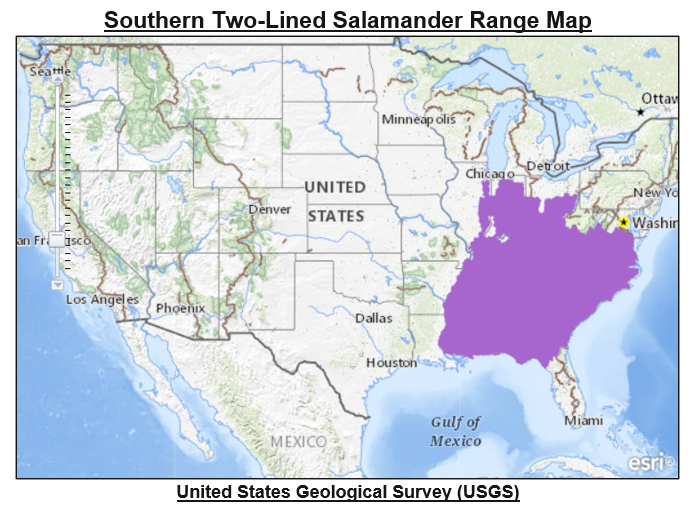
Depending upon their location, Southern Two-Lined Salamanders may burrow into the soil to overwinter. In warmer areas, they remain active and feed year-round.
Southern Two-Lined Salamanders are opportunistic predators that consume any small organisms they come across. As adults, they’ve been known to feed on roaches, spiders, ticks and other insects, earthworms, snails, and crustaceans. That’s a pretty varied diet for an amphibian!
Интересные факты про саламандровое дерево
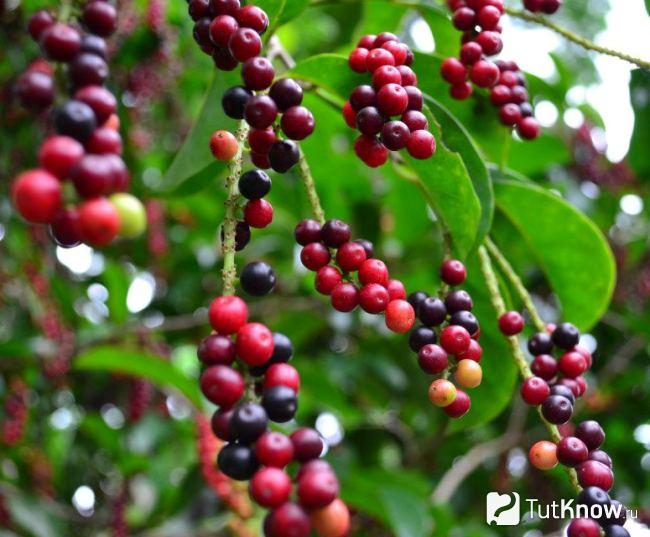
В восточной Азии и в Индии растение называют по-разному: вуни, буни, пани-хелох, амати, китайский лавр, вишня Квинсленда.
Растение легко всходит. Его выращивают из семян, черенков, почек и с помощью прививок. Последний способ размножения наиболее популярный. При использовании черенков укоренение наступает через 95 дней. Урожай у привитых растений можно собирать уже через 2-3 года, у выращенных из черенка или косточки — только через 4-6 лет.
Древесина дерева плотная, красивого красного оттенка, но для возведения сооружений или мебели малопригодна, так как впитывает влагу из воздуха. Если ее и используют, то для изготовления сувениров. А вот кору специально собирают — из нее делают прочные веревки.
В настоящее время растение активно изучают и пытаются культивировать. Цель — создать условия, при котором плодоношение, растягивающееся на 2 месяца, станет равномерным, и можно будет собрать урожай полезных и вкусных ягод.
Экстракт плодов уже вводят в состав лекарственных средств для лечения рака кишечника и гипертонической болезни.
Смотрите видео про бигнай:
Выращивание огненных саламандр
Полученные мою личинки начали питаться уже на следующий день после рождения. Характер питания не отличался от такового для взрослых особей. Личинки охотились исключительно на подвижную добычу. Основу рациона составлял резаный трубочник. Растут личинки огненной саламандры очень быстро. Уже через семь дней они имели длину 38 мм. По мере роста облик их все более напоминает взрослое животное, за исключением широкой плавниковой складки вдоль спины и сильно разросшихся наружных жабр, которые сохраняются до конца водного периода жизни.
В ходе развития у личинок формируются легкие. Спустя 54 дня после рождения (при длине тела 58 мм) у них начал проявляться свойственный взрослым окрас тела и уменьшились наружные жабры. В конце водного периода жизни личинка переходит к легочному дыханию: начинает периодически всплывать на поверхность за новой порцией воздуха.
Через 64 дня после рождения (при длине тела 65 мм) у них окончательно исчезли жабры и плавниковая складка, а кожа стала более грубой.
Когда молодые саламандры перешли к наземному образу жизни, я пересадил их в небольшой террариум (40x30x30 см), стилизованный под уголок леса. На дно положил слой керамзита (можно и битый красный кирпич), сверху насыпал смесь торфа с лесной почвой слоем 4-5 см. Водоем в террариуме не обязателен, но почва должна быть влажной. Для этого необходимо периодически увлажнять грунт из пульверизатора.
Огненным саламандрам нужны различные укрытия: куски коры, обломки кокосовой скорлупы и т.п. Освещения и обогрева террариум не требует, но по желанию для подсветки можно воспользоваться люминесцентными лампами. Вот только дроссель желательно разместить подальше от террариума. Это связано с температурным режимом: саламандры плохо переносят повышение температуры выше 25 градусов Цельсия. Летом мне пришлось убрать террариум из комнаты в ванную (самое прохладное место в квартире).

Фото личинка онненной саламандры
В условиях террариума молодые огненные саламандры получали в качестве корма выдержанный трубочник,а изредка — мокриц и дождевых червей. Саламандры активизируются лишь с наступлением сумерек, причем комнатное освещение они в расчет не принимают: даже если лампы горели всю ночь, они все равно активны только до рассвета.
Не вызывает сомнений, что их суточные ритмы обусловливаются не только световыми, но и пищевыми факторами, поскольку в светлое время, а тем более в жаркие летние дни, мелкие беспозвоночные, составляющие основу рациона огненных саламандр в природе, тоже прячутся и появляются с наступлением темноты, а вслед за ними и огненные саламандры.
Окраска огненных саламандр варьирует. Пятна у всех расположены по-разному. Семь моих особей имеют желтую окраску пятен, а три – желто-оранжевую.
Продолжительность жизни саламандр в условиях террариума, по литературным данным, составляет в среднем 20-25 лет. У меня огненные саламандры живут около полутора лет и за это время достигли размера 12,5 см.
Огненная саламандра как нельзя лучше подходит для школьных уголков живой природы, а также для разведения в домашних условиях. Содержание этих любопытных земноводных не столь обременительно, как это может показаться на первый взгляд, и является весьма полезным и познавательным занятием.
Д. Карпов г. Воронеж
Журнал Аквариум 2003 №4
Просмотров: 6684
#2. Spotted Salamander
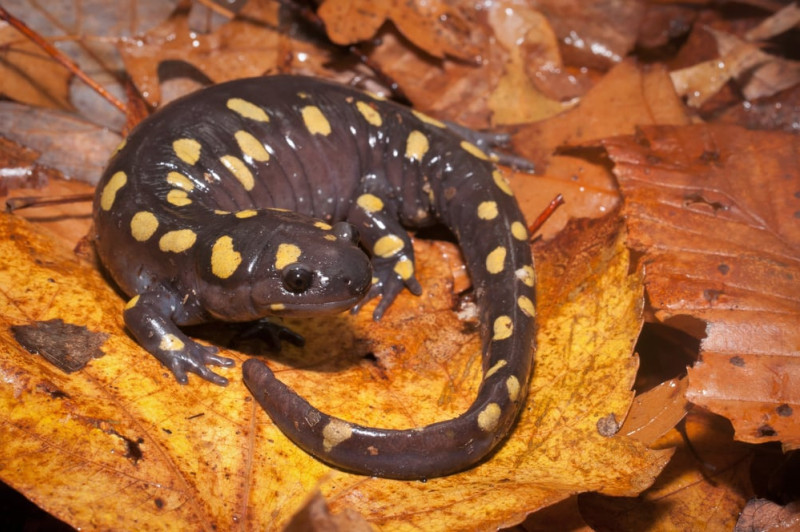
Identifying Characteristics
Adults are 5.9 to 9.8 inches long with wide snouts. They are typically black but may also be bluish-black, dark grey, dark green, or dark brown. Their underside is slate gray or pale pink.
They have two uneven rows of spots down their back, from just behind their eyes to the tip of their tail. Spots on the head are orange and fade to yellow further down the body and tail.
Larvae are light brown or greenish-yellow with small darker spots, external gills, and fin-like tails.
The Spotted Salamander is found primarily in hardwood forests with vernal pools, which are temporary ponds created by spring rain. Like many salamanders in Georgia, they require vernal pools for breeding because the fish in permanent lakes and ponds would eat all their eggs and larvae.
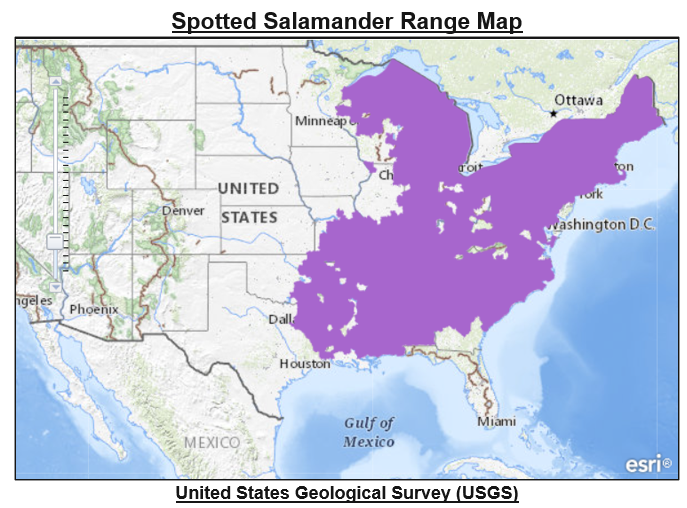
These salamanders are fossorial, meaning they spend most of their time underground. Spotted Salamanders are typically only seen above ground just after heavy rain, so you’ll need to get a little muddy to find one! They go dormant underground during the winter months and don’t come out until the breeding season between March and May.
The Spotted Salamander’s eggs are truly incredible. The embryos can host algae inside their eggs, and they are the only vertebrate known to do so. The embryos and algae have a symbiotic relationship. The algae have a suitable habitat, and in return, they produce the oxygen necessary for the embryos to grow and thrive.
#5. Marbled Salamander
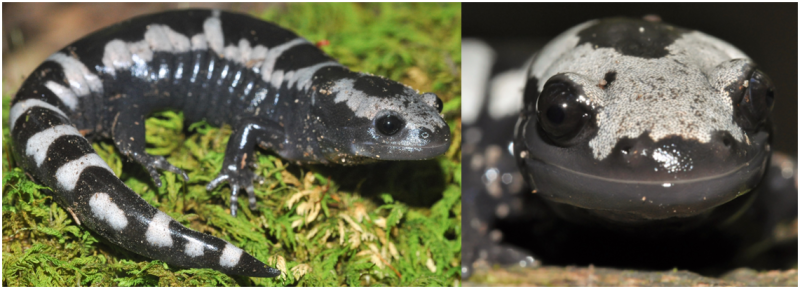
Identifying Characteristics
Adults range from 3.5 to 4.25 inches in length.
Their coloring is dark brown or black. Males have white crossbands while females have silver or gray.
Stout-bodied and chubby, females tend to be larger than males.
Marbled Salamanders occupy various damp habitats, from low-lying floodplains to moist, wooded hillsides. However, they spend most of their time underground or beneath rocks, logs, leaf litter, or other debris, so it’s unusual to find one unless you’ve disturbed its hiding place!
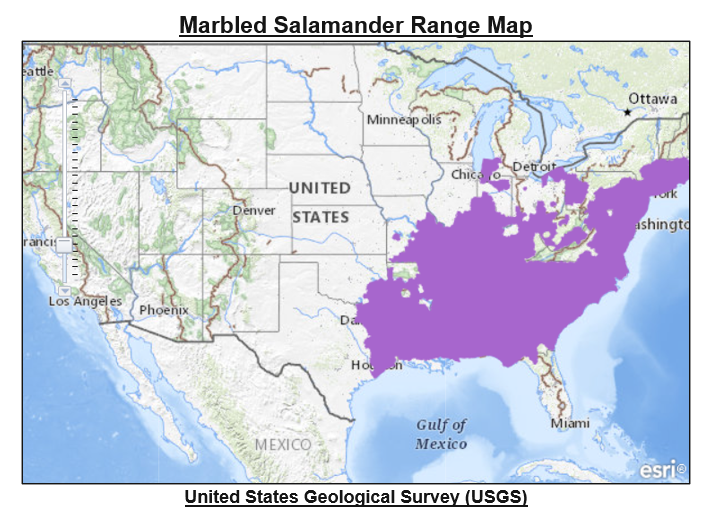
Marbled Salamanders in Georgia are considered a keystone species, which is an animal whose disappearance would completely change its ecosystem.
For example, let’s look at the relationship between Marbled and Spotted Salamanders:
Marbled Salamanders eat Spotted Salamander larvae, which eat zooplankton. If Marbled Salamanders were suddenly removed from this food chain, the Spotted Salamander population would explode.
With so many more Spotted Salamanders eating zooplankton, eventually, the zooplankton would become extinct in that area. Then, once their food source disappeared, Spotted Salamanders would also disappear.
For such a small animal, Marbled Salamanders are incredibly important!
#1. Eastern Newt
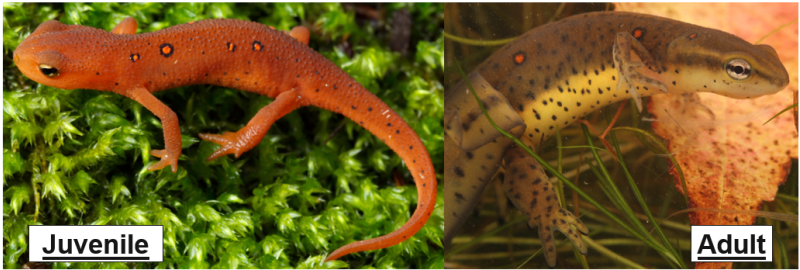
Identifying Characteristics:
Larvae are aquatic and have smooth, olive green skin, narrow, fin-like tails, and feathery gills.
Juveniles are terrestrial and have rough, orangish-red skin with darker spots outlined in black.
Adults have slimy, dull olive-green skin, dull yellow undersides, darker black-rimmed spots, and a blade-like tail.
Eastern Newts have the most complicated life cycle of any salamander in Georgia!
When they’re first hatched, they spend all of their time in the water. This larval stage lasts for two to five months. After that, they metamorphose into juvenile Eastern Newts.
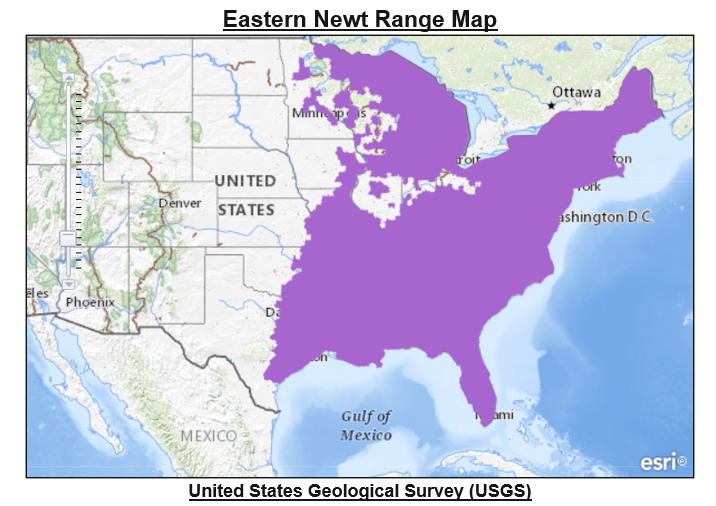
They live in terrestrial forest habitats for two to seven years during their juvenile stage. Even though they generally remain hidden under moist leaf litter and debris, you may see them moving about on rainy days and nights, foraging insects, worms, and spiders. This is the stage of life you’re most likely to see an Eastern Newt. If you spot one, be careful – they have glands that secrete a potent neurotoxin when they’re threatened.
Finally, Eastern Newts will migrate back to a water source and metamorphose into aquatic adults, where they eat small amphibians, fish, and worms. They can live up to 15 years and spend the rest of their lives in this aquatic form.
Interestingly, Eastern Newts are known for their homing ability, which allows them to travel to and from their breeding ground. Though scientists are unsure of the exact mechanism, the Eastern Newt likely uses magnetic orientation to find its way!
Во что превращаются саламандры?
Яйца вылупляются и развиваются в личинки— головастики у лягушек и «эфы» у саламандр. Но иногда развитие земноводных принимает странный оборот. Иногда личинки созревают до репродуктивной стадии, не подвергаясь нормальному процессу метаморфоза для наземной взрослой жизни.
Саламандры превращаются в лягушек?
Земноводные рождаются личинками и превращаются во взрослую форму. С большими головами и длинными волнистыми хвостами детеныши лягушек могут выглядеть как саламандры и саламандры, а также как жабы. … Как отличить личинку саламандры от головастика лягушки.
| Саламандра Личинка | Головастик (лягушка или жаба) |
|---|---|
| нет клеевого органа на голове | адгезивный орган на голове |
• 20 апреля 2019 г.
Рождаются ли огненные саламандры в огне? У европейских огненных саламандр на черной коже огненно-оранжевые или желтые отметины. В древности люди ошибочно полагали, что они родились в огне. Может быть, это потому, что огненные саламандры часто прячутся под бревнами, и когда люди собирали эти бревна, чтобы развести костер, саламандры выбегали из пламени.
Почему в Frozen 2 есть саламандра? Для огненного духа команда «Холодного сердца XNUMX» создала сине-фуксиевую саламандру по имени Бруни, чьи безумные рывки оставляют после себя фантастический цветной всплеск. Вместо реалистичных красных или оранжевых оттенков создатели фильма выбрали оттенок – пурпурный, который читается как сюрреалистично волшебный.
Почему саламандра такая яркая
У каждого природного явления есть своя причина. Окраска любого животного спасает особь от хищников. Саламандра – существо маленькое, нежное и беззащитное. Ей нужно маскироваться под основные оттенки среды. Однако огненная саламандра делает все, чтобы ее заметили. Этим она напоминает пчел, ос и шмелей, которые имеют весьма заметную окраску.
Сравнение с этими насекомыми здесь не случайно. Огненные саламандры и все эти полосатые насекомые обладают ядом
Своим окрасом они предупреждают всех, кто может и хочет ими пообедать – осторожно, опасно для жизни и здоровья. Со временем у хищников вырабатывается наследственная реакция на подобную предупреждающую окраску
А реакция состоит в том, чтобы не трогать эту саламандру ни при каких обстоятельствах
А реакция состоит в том, чтобы не трогать эту саламандру ни при каких обстоятельствах.
На голове это земноводное имеет околоушные железы, называемые паротидами. В них вырабатывается яд. Это вязкая жидкость белого цвета, имеющая запах чеснока или миндаля.
Действующими веществами этой жидкости являются девять стероидных алкалоидов, которые обладают токсичными свойствами. Отравление ядом происходит при поедании саламандры или при попадании токсина на слизистую оболочку. Животные, имеющие хороший кожный покров, при контакте с саламандрой интоксикации не испытывают. Это же относится к человеку.
Распространенные заболевания у саламандр, связанные с неволей
- Пищевые расстройства. Встречаются при неуместных или однообразных диетах.
- Недостаток витаминов и минералов. Может привести к деформации и медленному росту. Все это влияет на функционирование нервной системы, глаз и органов пищеварения.
- Открытые раны. Могут легко инфицироваться, особенно, в среде, которая не имеет должного уровня чистоты. Ранения обычно происходят в течение первых нескольких недель, когда животное акклиматизируется. Чтобы избежать проблем оставьте тритона или амфибию в покое в максимально возможной.
- Грибковые инфекции. Особенно опасны, так как заразны и часто проходят со смертельным исходом.



